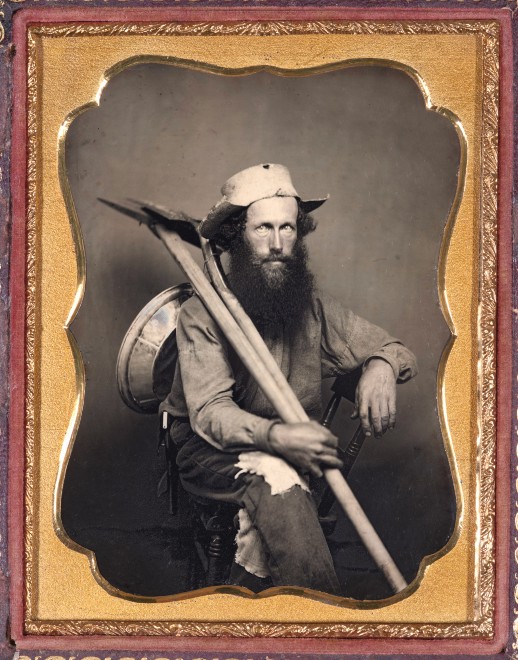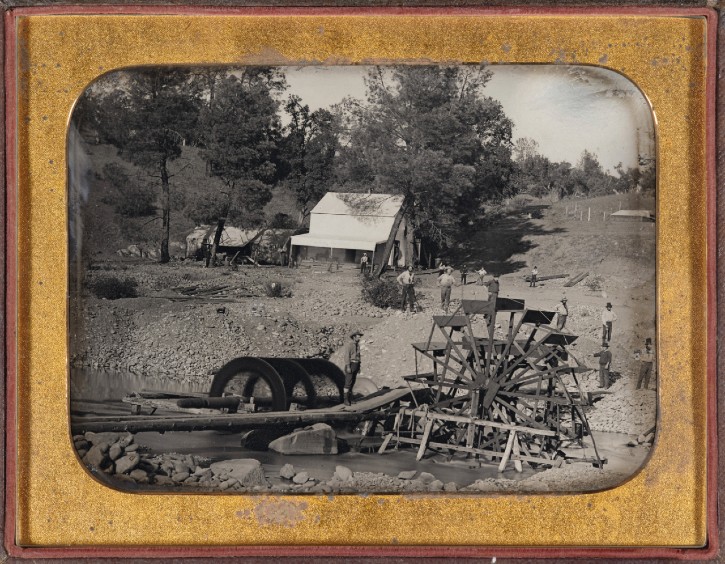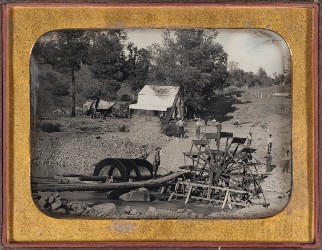
SALEM, Mass. – From the moment the first cry of “Gold!” was heard at Sutter’s Mill in 1848, thousands of people made the journey west to find their fortune. Daguerreotypists, practitioners of one of the earliest forms of photography, also made their way west to capitalize on the ready market of potential customers. Their images reveal a nation on the cusp of economic, social and environmental change. Organized by the Nelson-Atkins Museum of Art and curated by Jane Aspinwall, “Gold Rush: Daguerreotypes of Early California” will be on view at the Peabody Essex Museum from April 4 through July 12.
The California gold rush was the first broadly significant event in American history to be documented in depth by photography. Featuring nearly 100 works, this exhibition provides an insightful look into this historic event through the eyes of early photographers.
“These photographs offer a rare glimpse into 19th-century America, providing vivid detail and realism,” says Lynda Roscoe Hartigan, PEM’s deputy director. “This early form of photography astonished viewers with extraordinary images of everyday life during the gold rush, including city views, studio portraits, gold towns and miners at work in the fields – with a high level of technical and artistic achievement.”
Daguerreotype studios were established in the larger cities, but some adventurous daguerreotypists traveled into the gold fields in photographically outfitted wagons. They captured images of various mining technologies, large-scale riverbed and hydraulic mining operations, small gold towns and the variety of nationalities and races involved in the mining industry. In the rapidly expanding cities of San Francisco and Sacramento, daguerreotypists made studio portraits of the miners, sometimes holding the tools associated with gold mining and pans of their hard-earned gold nuggets.

While fortunes were made and lost, the ensuing mass migration reshaped the social and physical landscape of the nation. In less than a decade, 300,000 people, free and enslaved, journeyed to the new state of California. While many made the trek westward by wagon, others sailed from eastern ports – including Salem, Massachusetts – around the tip of South America to arrive in San Francisco harbor. With Salem’s trade economy on the decline in the 1840s, the lure of instant riches in California attracted many skilled workers, merchants and ship captains. These newcomers joined Native, Sonoran Mexican and other groups already living in the gold region to create one of the most diverse populations on the continent.
Despite the promise of endless opportunity, most people who ventured to California in search of gold instead found a combination of disappointment, hardship and uncertainty. Gold fever began to subside in the late 1850s. Though few struck it rich, many stayed in the region. Existing images are powerful, but do not fully convey the experience of the California gold rush, overlooking the contested legacies of westward expansion.



